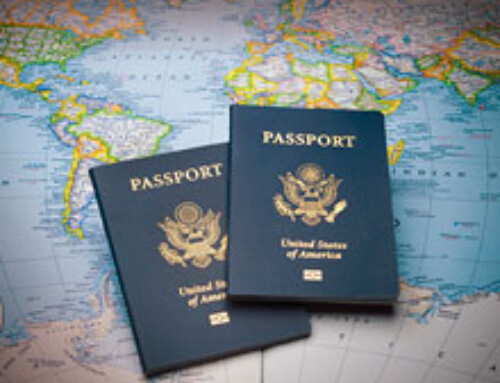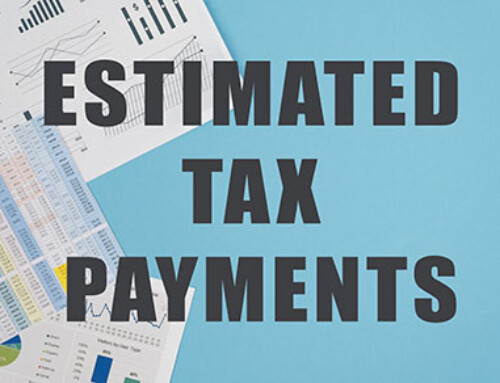
Couple Calculating Budget
Numerous tax breaks have been retroactively expanded for 2015 and beyond — or, in some cases, been made permanent — under the Protecting Americans from Tax Hikes (PATH) Act of 2015. Now that the dust from the new law has settled, individuals and small business owners can plan ahead with these 10 midyear tax strategies inspired by the recent legislation.
5 Tax Breaks for Individuals
- Consider tax breaks for college students. If you have a child in college this year, you may be eligible for tax benefits. The PATH Act makes the American Opportunity credit permanent and extends the tuition and fees deduction through 2016. Both of these breaks are subject to phaseouts based on income level. For each student, you may claim either the American Opportunity credit or the tuition and fees deduction, but not both. Thus, while it is possible to claim the credit and the deduction in the same year, you may not claim both for the same student. If your income is too high to take one of these breaks, your child might be eligible.
The PATH Act also permanently treats computers, computer equipment, software and Internet service as qualified expenses for Section 529 savings plans, so distributions for this purpose are tax-free. Summer planning can help maximize your tax benefits for costs incurred for the fall semester.
- Shop for a new car. If you itemize deductions on your federal income tax return, you can generally deduct state and local income taxes paid for the year. As an alternative, however, you may claim a deduction for state and local sales taxes. This option — which has been permanently extended by the PATH Act — is generally beneficial to taxpayers in locales with low or no state or local income taxes. But it can also benefit taxpayers who make large purchases during the year, regardless of where they live.
The sales tax deduction is determined based on actual receipts or an IRS table that lists amounts for each state. If you opt to use the IRS table, you can add on the actual sales tax paid for certain “big-ticket items,” such as cars or boats. If you’re in the market for a new vehicle, remember this alternate tax deduction.
- Transfer IRA funds directly to charity. After you turn age 70½, you must take required minimum distributions (RMDs) from your traditional IRAs, whether you want to or not. These RMDs are taxable in the tax year they’re received.
Under a provision made permanent by the PATH Act, if you’re age 70½ or older, you may transfer up to $100,000 directly from your IRA to a charity without any tax consequences. In other words, you can’t claim a charitable deduction for these transfers, but the payouts aren’t taxable either — even if they’re used to satisfy your RMD. Act sooner rather than later to avoid year-end scrambling. Keep in mind that this is a per person benefit. Although both spouses may individually transfer up to $100,000 from an IRA to a charity, one spouse cannot “borrow” the other spouse’s $100,000 to make a $200,000 transfer.
- Gift property to a charity. Real estate owners can deduct the value of “conservation easements” made to a charity that preserve the property in its original condition. Charitable deductions for long-term capital gains property (appreciated property that’s been held more than one year) are generally limited to 30% of the taxpayer’s adjusted gross income (AGI). Any excess may be carried forward for up to 15 years.
Under enhancements made permanent by the PATH Act, the deduction threshold is raised to 50% of AGI (100% for farmers and ranchers) for conservation easements. Any excess may still be carried forward for up to 15 years. One catch, however, is that all such conservation donations must be made in perpetuity.
- Install energy-saving equipment. Are you dreading the summer heat? It may be time to install a central air conditioning system. There are various requirements to qualify for the credit. First, the home must be your main home. Also, while the credit is generally equal to 10% of the cost of qualified energy-saving improvements, there is a lifetime credit limit of $500. Thus, if you’ve claimed the credit in a prior year, your current-year credit will be reduced accordingly. Other special dollar limits may apply. It’s available for a wide range of items from central air to insulation.
The PATH Act extended the residential energy credit only through 2016. So, it’s important to act before this tax-saving opportunity expires. (It may be extended again, but there are no guarantees.)
5 Tax Breaks for Small Businesses
- Buy equipment. The PATH Act preserves both the generous limits for the Section 179 expensing election and the availability of bonus depreciation. These breaks generally apply to qualified fixed assets, including equipment or machinery, placed in service during the year. For 2016, the maximum Sec. 179 deduction is $500,000, subject to a $2,010,000 phaseout threshold. Without the PATH Act, the 2016 limits would have been $25,000 and $200,000, respectively. The higher amounts are now permanent and subject to inflation indexing.
Additionally, for 2016 and 2017, your business may be able to claim 50% bonus depreciation for qualified costs in excess of what you expense under Sec. 179. Bonus depreciation is scheduled to be reduced to 40% in 2018 and 30% in 2019 before it expires on December 31, 2019.
- Improve your premises. Traditionally, businesses must recover the cost of building improvements straight-line over 39 years. But the recovery period has been reduced to 15 years for qualified leasehold improvements, qualified restaurant buildings and improvements, and qualified retail improvements. This tax break was reinstated and made permanent by the PATH Act.
If you qualify and your premises need remodeling, you can recoup the costs much faster than you could without this special provision. Keep in mind that some of these expenses might be eligible for bonus depreciation.
- Ramp up research activities. After years of uncertainty, the research credit has been made permanent under the PATH Act. For qualified research expenses, the credit is generally equal to 20% of expenses over a base amount that’s essentially determined using a historical average of research expenses as a percentage of revenues. There’s also an alternative computation for companies that haven’t increased their research expenses substantially over their historical base amounts.
Research activities must meet these criteria to be considered “qualified”:
- The purpose must be to create new (or improve existing) functionality, performance, reliability or quality of a product, process, technique, invention, formula or computer software that will be sold or used in your trade or business.
- There must be an intention to eliminate uncertainty.
- There must be a process of experimentation. In other words, there must be a trial and error process.
- The process of experimentation must fundamentally rely on principles of physical or biological science, engineering or computer science.
Effective starting in 2016, a small business with $50 million or less in gross receipts may claim the credit against its alternative minimum tax (AMT) liability. In addition, a start-up company with less than $5 million in gross receipts may claim the credit against up to $250,000 in employer Federal Insurance Contributions Act (FICA) taxes.
- Issue more stock. Does your business need an influx of capital? If so, consider issuing qualified small business stock (QSBS). As long as certain requirements are met (for example, at least 80% of your corporate assets must be actively used for business purposes) and the investor holds the stock for at least five years, 100% of the gain from a subsequent sale of QSBS will be tax-free to the investor — making such stock an attractive investment opportunity. The PATH Act lifted the QSBS acquisition deadline (December 31, 2014) for this tax break, essentially making the break permanent.
- Hire workers from certain “target groups.” Your business may claim the Work Opportunity credit for hiring a worker from one of several “target groups,” such as food stamp recipients and certain veterans. The PATH Act revives the credit and extends it through 2019. It also adds a new category: long-term unemployment recipients.
Generally, the maximum Work Opportunity credit is $2,400 per worker, but it’s higher for workers from certain target groups. In addition, an employer may qualify for a special credit, with a maximum of up to $1,200 per worker for 2016, for employing disadvantaged youths from Empowerment Zones or Enterprise Communities in the summer.
New transitional rules give an employer until June 30, 2016, to claim the Work Opportunity credit for applicable wages paid in 2015.
Midyear Tax Planning Meeting
We’re almost half way through the tax year. Summer is a great time for individuals and small businesses to get a jump start on tax planning. Contact us to estimate your expected tax liability based on year-to-date taxable income and devise ways to reduce your tax bill in 2016 and beyond.





